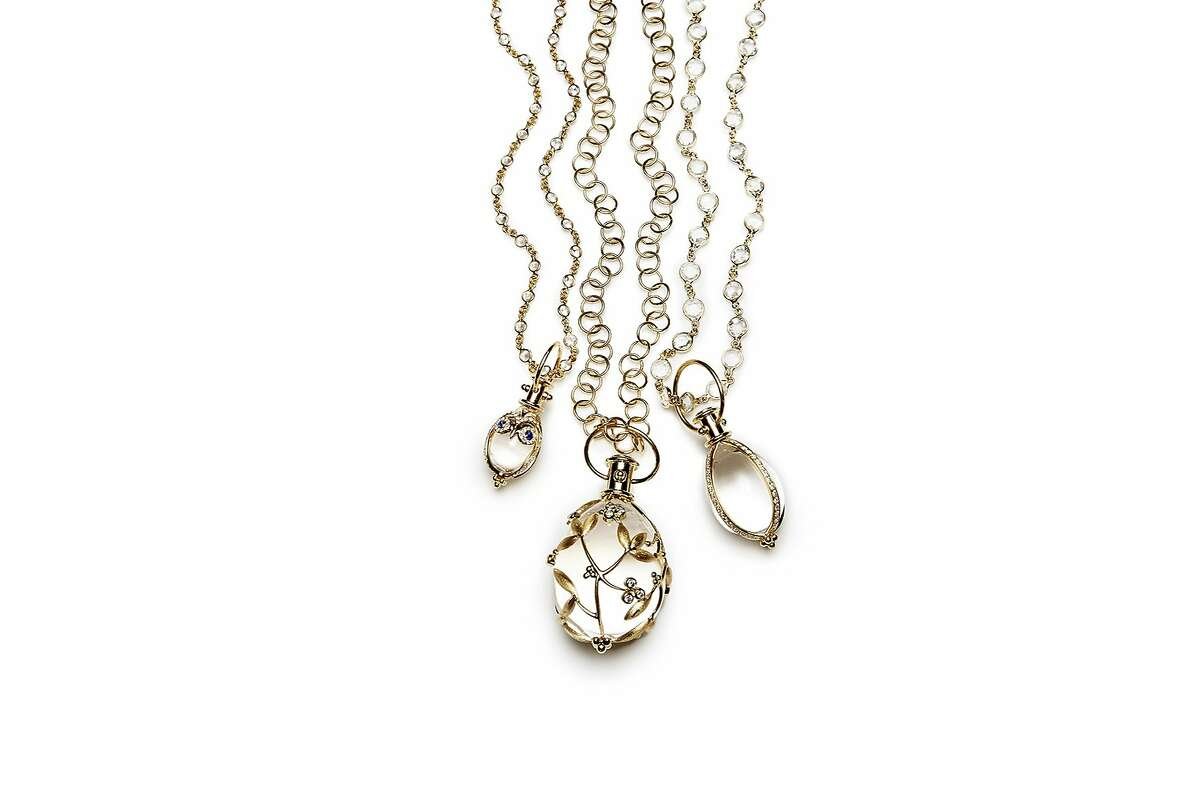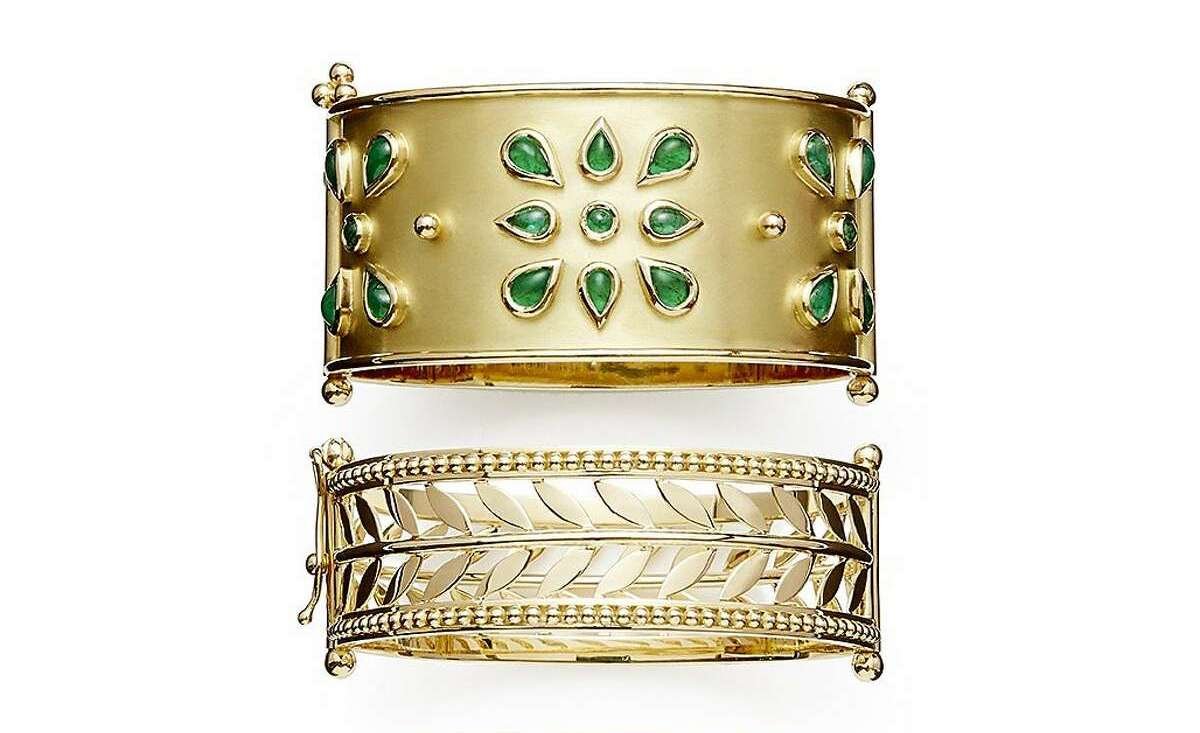Temple St. Clair's singular clasp on old world jewelry ethic
View original article on the San Francisco Chronicle
Glance inside a Temple St. Clair jewelry case and you'll see black opal rings circled by rows of rainbow-colored gems, adularescent moonstone pendants emitting a milky, otherworldly glow, and necklaces of tourmalines so vivid that rubies and emeralds pale in comparison. The contemporary fine jewelry company - every stone is hand selected and no two pieces are identical - was founded in Florence, Italy, in 1986 by Temple St. Clair (yes, that's really her name), a onetime academic and inexhaustible world explorer who cites Steve Jobs as her idol: "I can totally relate to his uncompromising quality first," she says. "I'm not a price point-driven brand. It is what it is because I demand the best materials and craftsmanship." Pieces start at $500 and ascend to seven figures for bespoke designs.
We had a chance to catch up with St. Clair while she was in San Francisco to debut her latest collection at Saks Fifth Avenue on Union Square.
Q: How did you get into jewelry design?
A: I never wanted to be a jewelry designer. I could've been a writer or a painter or something else, but jewelry has been my medium. It's my vehicle to support expression. I came to it in more of an artistic manner and yet I'm not working in the fine arts ... I do love gemstones, though.
Q: Temple St. Clair doesn't attract the same customers as Tiffany & Co. How would you describe your clientele?
A: Ours is very old world, and yet for a modern women. It's mostly women buying for themselves. I find that the type of woman that is attracted to my collection tends to be very independent, confident, usually refers to herself as a sort of "creative" type and wants signature pieces and something very personal and lasting and significant.
Q: You've said your design approach is somewhat academic. How so?
A: I do work thematically. If there's a burning interest in something, I will follow a path, from looking at old astronomical drawings to Tibetan paintings. When I started, I lived for 12 years in Florence, and I had come from the academic background, studying Italian Renaissance literature and Italian art history. I have certainly drawn on that over the years.
Q: Your signature piece, and often an entry point into the Temple St. Clair collection, is the rock crystal amulet. Why do you think this piece resonates?
A: I would liken it to, say, my Fabergé egg; Temple's amulets have somewhat of a history in that way in that they get collected and people buy them and layer them and people buy the ones that speak to them the most. It has become such a signature item for me, so recognizable that I'm continuing to turn the dial on creating new ones.
Q: Temple St. Clair is approaching its 30th anniversary. What's the best part of hitting this milestone?
A: I remember when I was in my 20s and just started, I thought, "In this particular industry, I'm going to have to get older and mature to be selling the really big pieces," because there's a certain gravitas with these pieces, and you have to be able to stand behind what you're doing. I think there's an authenticity to what I do.


